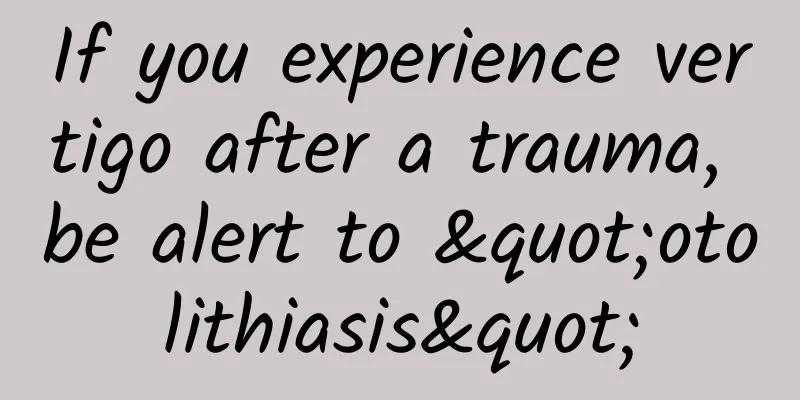Don’t be afraid of the word “penetration”! Let us help you understand what a renal puncture biopsy is!

|
The implementation of renal puncture biopsy is a huge leap in the development of nephrology. Currently, the pathological technology and diagnosis of renal biopsy have become increasingly mature. It is not only the gold standard for the diagnosis of kidney disease, but also plays an important role in clarifying the pathological type of the disease, judging the activity of the lesion, guiding treatment, judging the efficacy and evaluating the prognosis. The history of renal puncture biopsy can be traced back to the early 1950s. In 1952, the first description of sitting percutaneous renal biopsy was given, using intravenous pyelography for positioning and an aspiration needle for operation. The early renal puncture biopsy technology was immature, and the qualified rate of sampling was low. Only less than 40% of the cases obtained a clear pathological diagnosis. In 1954, an improved version of the puncture needle was introduced. The patient was changed to a prone position and a probe needle was used for positioning, and the success rate increased to 96%. In 1985, the accuracy of real-time positioning and guidance of renal biopsy by B-ultrasound renal biopsy was further improved. The puncture method has also been continuously improved, forming aspiration biopsy using Memghini needles and cutting biopsy using Tru-Cut needles. Since then, the invention of the automatic puncture gun has simplified the renal biopsy operation and greatly reduced the incidence of complications. With the development of renal puncture biopsy technology, the diagnosis rate of patients has been significantly improved, and the incidence of life-threatening complications is less than 0.1%. There are four main methods of renal biopsy: percutaneous renal biopsy, open renal biopsy, laparoscopic renal biopsy and transvenous renal biopsy. Currently, percutaneous renal biopsy is the most commonly used, and the other three are rarely used in clinical practice. Percutaneous renal biopsy is divided into two methods: negative pressure suction needle puncture and automatic biopsy gun puncture. The PLA Institute of Nephrology of the Eastern Theater General Hospital (formerly Nanjing General Hospital of Nanjing Military Region) conducted the first percutaneous renal biopsy in 1979, and is one of the earliest units in the country to conduct renal biopsy. Academician Li Leishi created the "1-second rapid percutaneous negative pressure suction renal biopsy method" and the "bevel needle negative pressure suction method" under B-ultrasound guidance. Its accessories are simple and easy to operate, which laid the foundation for the promotion of renal puncture biopsy in my country and has a milestone significance in the history of renal biopsy development in China. The operation process of percutaneous renal biopsy is as follows: ① The patient lies prone with both arms extended forward and the head tilted to one side. A small pillow is placed at the level of the abdomen at the level of the navel to straighten the lumbar spine and reduce the retraction of the kidney that may occur during the renal puncture. ② The lower pole of the left kidney is usually used as the puncture point. Routine disinfection and draping are performed, and B-ultrasound positioning is performed, and then 2% lidocaine is taken for layer-by-layer anesthesia. ③ Negative pressure suction needle puncture method, take an 18-gauge needle tube and needle core, puncture to the renal capsule, pull out the needle core, place a needle plug in the needle tube, connect the negative pressure device, observe the kidney needle insertion point on the puncture line under B-ultrasound, and ask the examinee to hold his breath. After the kidney is fixed, puncture is performed. If a Bard puncture gun is used for puncture, the puncture reaches the outside of the renal capsule at the lower pole of the kidney under ultrasound guidance. The examinee is also asked to hold his breath. At the thickest part of the renal parenchyma at the lower pole of the kidney, avoid the renal pelvis and calyces, pull the trigger, and withdraw the needle immediately when a "gunshot" is heard. Generally, two punctures are required, and each insertion time is about 1 s. ④ The renal tissue obtained by puncture will be divided into three parts as required by a professional pathology technician or a trained doctor and sent for light microscopy, immunofluorescence and electron microscopy examination respectively. In short, renal puncture plays an important role for us kidney disease patients. However, we still hope that we kidney disease patients can pay attention to kidney disease as early as possible and not let it develop, which will eventually endanger our lives and health and not be worth the loss. |
<<: Which is more important, renal function test or renal ultrasound?
Recommend
Chest pain in late pregnancy
There are many abnormal phenomena throughout preg...
What to eat to nourish the ovaries
For women, the most important and effective way t...
What are the harms of pelvic effusion to the body
The symptoms of pelvic effusion are a very danger...
Caesarean section wound recovery and repair
Many female friends need to have a cesarean secti...
Is eating durian helpful for dysmenorrhea?
Women's bodies will become very weak during m...
How to shrink pores most effectively and conveniently
Many people have enlarged pores on their faces du...
"Food Safety Guide" Series | Can children eat ice cream? Keep these points in mind!
In the hot summer, people still want to eat somet...
In addition to the green wild vegetables in spring, this "lazy grass" also provides diners with delicious
Author: Fluent Do you know what "lazy grass&...
Low back pain after biochemical pregnancy
To put it simply, biochemical pregnancy is a meth...
How to massage the Sanyin Jiao to induce menstruation?
Menstruation is very important for women. Irregul...
Is there hope for a 56-day pregnancy with no fetal heartbeat?
Pregnant women can be diagnosed through B-ultraso...
What causes cloudy urine in women? Several common situations
Normally our urine is transparent. Many women hav...
The best way to fight aging is not retinol, but...
Compiled by: Gong Zixin Retinol Can be called the...
Pay attention to these symptoms, they may be kidney deficiency!
When talking about kidney deficiency, most people...
Can Daconin suppository be used for candidal vaginitis?
Important reminder: If you want to eliminate rhiz...









